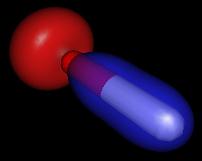- Phone: 800-492-1252
- Fax: 440-368-3569
- E-mail: info@spartanwatertreatment.com

Spartan offers turnkey advanced oxidation processes (AOP) systems for industrial water treatment applications, including groundwater remediation, wastewater treatment, and pretreatment. Oxidation processes are most often used to remove TOC, COD, or specific organic compounds from water. Spartan offers laboratory and pilot plant services for evaluating ozone and advanced oxidation processes for water treatment. Call Spartan Environmental to discuss your application and learn how we can design a system to meet your needs.
Advanced oxidation processes (AOP) combine ozone (O3), ultraviolet (UV), hydrogen peroxide (H2O2), and/or catalyst to offer a powerful water treatment solution for the reduction (removal) of residual organic compounds as measured by COD, BOD or TOC. All AOPs are designed to produce hydroxyl radicals. The hydroxyl radicals act with high efficiency to destroy organic compounds.
The chart below shows the oxidizing power of hydroxyl radicals versus other oxidants.
Oxidizing Agent
Hydroxyl Radical
Oxygen (atomic)
Ozone
Hydrogen peroxide
Hypochlorite
Chlorine
Chlorine dioxide
Oxygen (molecular)
EOP (V)
2.80
2.42
2.08
1.78
1.49
1.36
1.27
1.23

The advanced oxidation process (AOP) is successfully used to decompose many hazardous chemical compounds to acceptable levels without producing additional hazardous by-products or sludge, which require further handling. The term advanced oxidation processes refers specifically to processes in which oxidation of organic contaminants occurs primarily through reactions with hydroxyl radicals. AOPs usually refer to a specific subset of processes that involve O3, H2O2, and/or UV light.
The most widely applied advanced oxidation processes (AOP) have been:

The selection of a specific advanced oxidation process is application-dependent. Spartan evaluates each client’s application to see which AOP fits best based on the type of compounds to be removed, treatment objectives, concentrations, site considerations, budget, etc.
Advanced oxidation processes are designed to both efficiently produce and use hydroxyl ions for these oxidations. They have a wide range of applications, mainly for oxidation of refractory compounds, TOC & COD reduction in:
AOP can act on organic compounds in water in several ways: convert one compound into another (conversion), conversion with a reduction in toxicity and mineralization (breaking the organic down to CO2 and inorganic salts). In some cases, discharge permits simply require conversion from a compound of interest to another compound that is not covered by the permit. For example, some permits require taking phenol to a fraction of a ppm. In other cases, permitting authorities require the toxicity of the compound/wastewater to be reduced before discharge. In some cases, mineralization is needed as measured by a reduction of TOC.
Spartan supplies advanced oxidation processes for organic oxidation (organic removal); examples include aromatic compounds such as phenol/benzoic acid. Please contact us with any questions.